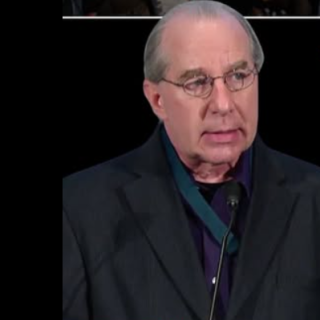Advertisement
On May 1, 2025, 18-year-old Ryan Hinton was fatally shot by a Cincinnati police officer in East Price Hill. This tragedy highlights the controversial legal doctrine of qualified immunity that often protects officers from accountability, acting as a veritable “get out of jail free card” in cases of alleged misconduct.
Meanwhile, the community grapples with the aftermath of two connected tragedies: Hinton’s shooting and the subsequent death of Hamilton County Sheriff’s Deputy Larry Henderson, struck and killed by Hinton’s father, Rodney Hinton Jr., the following day. While Rodney Hinton faces charges of aggravated murder, his actions are described as those of a grieving father distraught after watching footage of his son’s death.
The Incident
A car is stolen, there’s a chase, and then a fatal shooting captured on body camera footage. Even though blurry, it shows officers chasing suspects into a wooded area. One officer shouts, “He’s got a gun! He’s got a gun!” In mere moments, another officer fires four to five shots at Hinton as he emerged from between two dumpsters. Two bullets struck Hinton, one in the chest and one in the arm, and he died at the scene.
Police Chief Theresa stated that the officer, a 10-year veteran, believed Hinton pointed the gun at him in a “bladed position,” prompting the officer to fire out of fear for his life. However, the body camera footage does not clearly show Hinton aiming a weapon, and there is no evidence he fired at officers. The officer’s account is under investigation by the Cincinnati Police Department’s Homicide Unit, but the lack of clear visual evidence has fueled skepticism about the justification for deadly force.
Hinton’s family, represented by attorney Michael Wright, has expressed shock and devastation. Wright noted that Hinton had turned 18 just weeks before the shooting and was described as a “fun, loving, and good kid.” The family questions why lethal force was necessary, especially given Ohio’s open-carry laws, which allows carrying firearms in public in plain view.
“Being in a stolen car, having firearms – that’s not a death penalty,” Wright argued. Hinton’s grandfather, Rodney Hinton Sr., called the incident an “emotional mistake by everybody.”
The Officer’s History?
The officer’s identity has not been publicly disclosed as the department is citing Marsy’s Law, a constitutional amendment overwhelmingly approved by Ohio voters in 2017. Ohio law enforcement claims the law allows them to not disclose the names of officers involved in fatal shootings and use of force.
However, reports from activists – who are almost always right in this matter – say the officer had multiple write-ups for excessive force prior to the Hinton shooting. If this is true it raises critical questions about why an officer with a history of alleged misconduct was assigned to a high-risk unit like the Fugitive Apprehension Squad, and why Marsy’s Law should not apply here. The lack of transparency about the officer’s record has frustrated Hinton’s family and advocates, who argue that such patterns of behavior should disqualify officers from wielding deadly force in volatile situations.
This case echoes with broader concerns about police accountability. Officers with documented histories of excessive force often remain on duty, sometimes in roles that increase the likelihood of violent encounters. Without systemic reforms to address repeat offenders, communities remain at risk, and incidents like Hinton’s death continue to erode public trust in law enforcement.
Qualified Immunity: A legal shield for police misconduct
At the heart of the debate over accountability in Hinton’s case is the doctrine of qualified immunity, a legal principle that shields government officials, including police officers, from civil lawsuits unless they violate “clearly established” constitutional rights. Established by the U.S. Supreme Court in 1967 and refined in 1982, qualified immunity requires plaintiffs to show that an officer’s actions were not only unconstitutional but also matched the facts of a prior case so closely that the officer had clear notice their conduct was unlawful. This standard creates a high bar for victims of police violence, often insulating officers from liability even in egregious cases.
In the context of excessive force, the Supreme Court’s 1989 ruling in Graham v. Connor set the standard that police use of force must be “objectively reasonable” under the circumstances. However, qualified immunity adds a layer of protection by focusing not on whether the force was excessive but on whether the officer’s actions violated a right that was clearly established at the time. As a result, courts frequently grant immunity if no prior case with nearly identical facts exists, creating a Catch-22: victims cannot win lawsuits because no precedent exists, and no precedent is created because cases are dismissed on immunity grounds.
The Supreme Court’s 2021 rulings in two excessive force cases illustrate this barrier. In one case, the Court upheld qualified immunity for an officer who knelt on a suspect’s back for eight seconds, finding no “sufficiently similar” precedent to deny immunity. In another, officers who fatally shot a man holding a hammer were granted immunity because no prior case clearly established their actions as unlawful. These decisions underscore how qualified immunity protects officers even when their actions appear unreasonable, leaving victims and families with little recourse.
For Ryan Hinton’s family, qualified immunity poses a significant obstacle to seeking justice. If they pursue a civil lawsuit alleging a violation of Hinton’s Fourth Amendment rights, they must overcome the hurdle of proving the officer’s actions were not only excessive but also violated a clearly established precedent. Given the ambiguity of the body camera footage and the officer’s claim that Hinton posed an immediate threat, a court could grant qualified immunity, effectively shielding the officer from liability. The officer’s history of excessive force complaints may be deemed irrelevant unless prior cases with nearly identical facts exist, further tilting the scales in favor of immunity.
The Broader Implications: A call for reform
Hinton’s death is not an isolated incident but part of a larger pattern of police shootings that disproportionately affect Black communities. Data shows Black individuals are killed by police at more than three times the rate of white individuals, often in encounters involving minor offenses or no crime at all. Hinton, a Black teenager, was pursued for his alleged involvement with a stolen vehicle – a nonviolent offense that critics argue did not warrant a lethal response. His family’s attorney has emphasized the fear Black individuals face during police encounters, stating, “We don’t deserve to be killed just because we’re running away from the police. We’re scared just as much as anybody.”
The doctrine of qualified immunity has faced growing criticism from across the political spectrum. Justices Sonia Sotomayor and Clarence Thomas have publicly questioned its expansion, with Sotomayor warning in a 2018 dissent that it tells officers “They can shoot first and think later” while leaving “palpably unreasonable conduct” unpunished. Congressional efforts to reform qualified immunity, such as the George Floyd Justice in Policing Act, have stalled in the Senate, leaving state legislatures as the primary battleground for change. Advocates argue that eliminating or narrowing qualified immunity would deter excessive force by ensuring officers face consequences for unconstitutional actions.
The Ohio Coalition to End Qualified Immunity, which I am the founder and committee chair, has been seeking to end this doctrine by putting a constitutional amendment on a statewide ballot. Our mission is to replace qualified immunity with professional liability insurance. This will weed out the bad officers. No one is going to insure an officer with a lengthy complaint record.
Conclusion: A family’s loss and a system’s failure
The death of Ryan Hinton is a heartbreaking reminder of the human cost of unchecked police power and the legal barriers that protect officers from accountability. An 18-year-old with his life ahead of him was killed in a fleeting encounter, shot in the back by an officer with a history of excessive force complaints. Qualified immunity, with its stringent requirements and deference to police, stands as a formidable obstacle to justice for Hinton’s family and countless others.
As investigations continue, the Cincinnati community mourns both Hinton and Deputy Henderson, grappling with the ripple effects of systemic failures. Reforming qualified immunity, enhancing oversight of officers with disciplinary records, and addressing racial disparities in policing are critical steps toward preventing future tragedies.
Until such changes are made, families like the Hinton’s will continue to bear the burden of a system that too often prioritizes police protection over human lives.



